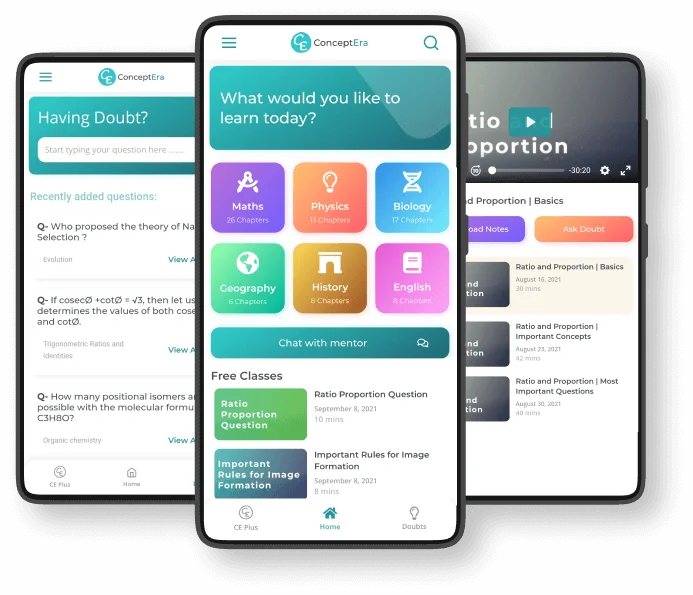Group – A
- Write the correct answer from the given alternatives:
1.1 The process by which natural agent reshape the existing landscape over the earth’s surface is known as –
(a) Exogenetic process (Ans)
(b) Endogenetic process
(c) Orogenetic process
(d) Epeirogenetic process
1.2 The main erosional process of river over salt dominated rock is –
(a) Abrasion
(b) Attrition (Ans)
(c) Hydraulic action
(d) Solution
1.3 The uppermost layer of heterosphere is –
(a) Hydrogen layer (Ans)
(b) Helium layer
(c) Atomic oxygen layer
(d) Molecular nitrogen layer
1.4 The instrument by which humidity of air mass is measured-
(a) Thermometer
(b) Barometer
(c) Hygrometer (Ans)
(d) Anemometer
1.5 The influence of EL-Nino is observed in –
(a) Atlantic Ocean
(b) Pacific Ocean (Ans)
(c) Indian ocean
(d) Arctic ocean
1.6 When the distance between earth and moon becomes least, the generating tide is called –
(a) Springtide
(b) Neap tide
(c) Perigean tide (Ans)
(d) Apogean tide
1.7 The processes of waste management involve –
(a) Reuse of waste
(b) Recycling of waste
(c) Reduction of waste
(d) All of them. (Ans)
1.8 The youngest state of India is –
(a) Uttarakhand
(b) Telangana (Ans)
(c) Chhattisgarh
(d) Goa
1.9 Dust storms of North-West India in summer is called –
(a) Kalbaishakhi
(b) Andhi (Ans)
(c) Western Disturbance
(d) Loo
1.10 A method followed in India to conserve soil is –
(a) Irrigation
(b) Jhum cultivation
(c) Strip cropping (Ans)
(d) Animal rearing
1.11 The state, which ranks first in jowar production in India is –
(a) Maharashtra (Ans)
(b) Uttar Pradesh
(c) Bihar
(d) West Bengal
1.12 The “Silicon Valley of India” refers to –
(a) Chennai
(b) Bengaluru (Ans)
(c) Kolkata
(d) Delhi
1.13 The longest National Highway in India is –
(a) National Highway 1
(b) National Highway 2
(c) National Highway 6
(d) National Highway 7 (Ans)
1.14 The R.F. of a topographical map with 15’x15′ latitudinal and longitudinal extension is
(a) 1: 2,50,000
(b) 1: 1,00,000
(c) 1: 50,000 (Ans)
(d) 1: 25,000
Group – B
2.1 If the statement is true. write “T’ and if false, write ‘F’ against the following (Answer any six statements):
2.1.1 Seif dunes are transformed from Barkhan dunes. True
2.1.2 Ozone layer is known as “Natural sunscreen”. True
2.1.3 In Mediterranean regions, rainfall generally occurs in summer. False
2.1.4 Strait line alignment of the Sun, the Moon, and the Earth is called Syzygy. True
2.1.5 Most of the rice in India is cultivated in winter as a Rabi crop. False
2.1.6 The most densely populated state of India is West Bengal. False
2.1.7 Different symbols are used to show geographical features in satellite images. False
2.2 Fill in the blanks with suitable words (Answer any six):
2.2.1 Planation of landmass caused by different exogenic forces is called Denudation.
2.2.2 Long, narrow, winding, steep-sided, ridges formed by the fluvioglacial deposits of sands and gravels are called Eskar.
2.2.3 In Rainfall-Temperature graph of any place, if the temperature curve becomes downward during mid of the year then the station lies in North hemisphere.
2.2.4 ________ force of the earth causes secondary high tide.
2.2.5 Air conditioners emit Hydrofloro Carbon gas into the atmosphere.
2.2.6 Bhagirathi and Alaknanda river meet at Devprayag to form the river Ganga.
2.2.7 Coimbatore city is called as the “Manchester of South India”.
2.3 Answer in one or two words (any six):
2.3.1 Name the high land which separates two rives systems?
Ans: Water Shed is the high land which separates two rives systems.
2.3.2 What is the relative humidity of saturated air?
Ans: The relative humidity of saturated air is 100%.
2.3.3 What type of current originates in the tropical ocean?
Ans: Warm current originates in the tropical ocean.
2.3.4 What type of waste material is plastic?
Ans: Plastic is recyclable waste.
2.3.5 Name the highest mountain pass in India?
Ans: Khaibar Darra is the highest mountain pass in India.
2.3.6 Where is the largest mangrove forest in the world located?
Ans: In Ganga–Brahmaputra delta the largest mangrove forest in the world located.
2.3.7 Which soil of India is ideal for cotton cultivation?
Ans: Black soil of India is ideal for cotton cultivation.
2.3.8 Which roadway has connected Delhi. Mumbai, Chennai, and Kolkata?
Ans: Golden Quadrilateral has connected Delhi. Mumbai, Chennai, and Kolkata.
2.4 Match the left column with the right column:
| Left Column | Right Column |
|---|---|
| 2.4.1 ISRO | Kerala Indian Space Research Organization |
| 2.4.2 Vembanad | Kerala |
| 2.4.3 Andhi | Rajasthan |
| 2.4.4 Kandla | Tax-free port of India |
- Answer the following questions in brief (Alternatives should be noted)
3.1 How are the bird’s foot deltas formed?
Ans: Named because it forms like a bird foot’s claw. This shape is created when the waves are weak and the river flow is stronger. They are formed due to deposition of finer materials by river water.
What is Bergschrund?
Ans: On high mountains, cracksbare sometimes, formed on the glacier due to unequal movement of the solid icemass. The deep vertical crack which opens up at the head of a glacier, when the ice breaks away from the rockwall behind, is called Bergschrund.
3.2 Mention two characteristic features of Jet Streams.
Ans: i. The circulation of jet stream is from west to east in a narrow belt.
ii. The circulation us observed between poles and 20° latitudes in both the hemispheres.
or,What is a tidal bore?
Ans: A tidal bore is a high tidal wave near the mouth of a river or in a narrow estuary.
3.3 What do you mean by landfills in waste management?
Ans: Disposing or dumbing or burying of waste in an organized way is known as landfill. This process of waste disposal focuses attention on dumbing the waste in the land far away from locality.
or,What is meant by the recycling of wastes?
Ans: Recycling is processing of used materials into new, useful products. This is done to reduce the use of raw materials that would have been used.
3.4 Define “Burst of Monsoon”.
Ans: Bursting of monsoon refers to the sudden change in weather conditions in India (typically from hot and dry weather to wet and humid weather during the southwest monsoon), characterized by an abrupt rise in the mean daily rainfall.
or,Mention two purposes of “Social Forestry”.
Ans: Social forestry aims to provide common man with timber, fuel, wood, fodder etc. It is actually, the forestry of the people, by the people and for the people.
3.5 What do you mean by subsistence agriculture?
Ans: Indian agriculture is subsistent type of agriculture whose main aim is to meet the food and other requirements of its vast population. The farmers produce crops with objective of meeting domestic needs rather than production of surplus fir national and international market.
or,Define the Information Technology industry.
Ans:
3.6 What are the Geostationary satellites?
Ans: Satellite that appears to be located at a fixed point in space when viewed from the earth’s surface, is called geostationary satellite.
or, What is “Remote sensing”?
Ans: Remote sensing is the process of detecting and monitoring the physical characteristics of an area by measuring its reflected and emitted radiation at a distance (typically from satellite or aircraft).
Group – C
- Give brief explanatory answer of the following (Alternatives should be noted):
4.1 Why wind action is dominant in desert regions?
Ans: Wind action is dominant in desert region because, compared with water, air has low density and viscosity. So, only very fine particles can be carried by it in suspension. Wind is active in areas that lack vegetative cover. Therefore, in dry areas lacking vegetation wind is by far the most predominant geomorphic agent.
or,Discuss the differences between sea breeze and land breeze.
Ans: Sea Breeze:-
i. During day when when air moves from sea to land, is known as sea breeze.
ii. In sea breeze air pressure in lower over the land than the sea.
iii. So in sea breeze air move from sea to land.
Land Breeze:-
i. During night when air moves from land to sea, is known as land breeze.
ii. In land breeze air pressure is lower over the land than the sea.
iii . So in land breeze air moves from land to sea.
4.2 State the differences between biodegradable and non-biodegradable wastes.
Ans: Biodegradable waste:-
i. Biodegradable waste can be degraded or broken down into simpler, harmless substances ny living organism.
ii. Breakdown of these wastes enriches the soil such asplant and animal waste.
iii. Therefore such wastes are beneficial for the soil.
Non Biodegradable Waste :-
i. Non biodegradable waste cannot be degraded or broken down into simpler substances by living organism.
ii. They do not breakdown and causes soil pollution.
iii. Such wastes are harmful for the soil
or,What are the advantages of the waste composting process?
Ans: Waste composting is a natural bio-degradation process which takes organic wastes to turn into nutrient rich food for plants. It is however a slow process and takes a lot of space.
4.3 Discuss in brief three main causes of agricultural development in the states of Punjab and Haryana?
Ans: Three main causes of agricultural development in the states of Punjab and Haryana are:-
i. Use of high yielding variety (HYV) seeds.
ii. Use of insecticides and pesticides.
iii. Use of sprinkles or drip irrigation technique.
or,State three main problems of urbanization in India.
Ans: Problems of urbanization in India are:-
i. Settlement :- Shortage of houses or settlements in urban areas. Only 79% urban household live in permanent houses.
ii. Transport :- With traffic congestion, almost all cities in India are suffering from acute form of transport problem.
iii. Health:- Growth and expansion of towns and cities means accommodation for greater number of people. Limited number of hospitals, health centres cannot serve such huge population.
4.4 Discuss three major uses of satellite imageries.
Ans: Uses of satellite imagery :-
i. Meteorology :- Forecasting behaviour of atmosphere, prediction of thunderstorms, cyclones etc.
ii. Agriculture :- Crop yield, cropping pattern, detection of landuse.
iii. Geography :- landuse mapping.
or, Give an account of different types of scales used in “topographical maps”.
Ans: i. The statement scale:- iIt states what distance on the map is equal to what distance on the ground.
ii. Reoresentative fraction:- This scale is the ratio of the map distance to the equivalent distance on the ground using the samd unit for both.
iii. Linear scale:- It represents the same relationship by means of straight line which is divided into certain lengths each of which represents a certain distance on the ground.

